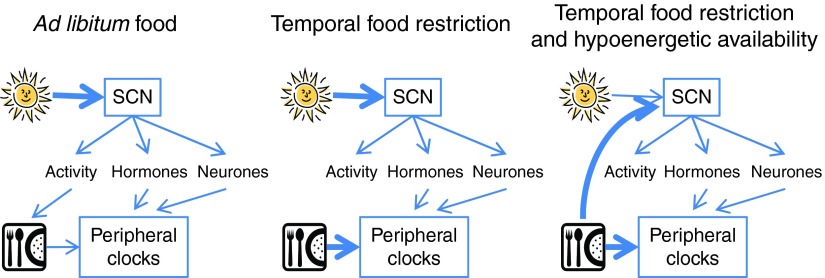Fig. 1.
Regulation of the circadian timing system by light and food. Under normal conditions of ad libitum food, light synchronises the master clock, the suprachiasmatic nuclei (SCN), which then synchronises peripheral clocks via neuronal and endocrine pathways, together with control over behavioural activity and thus feeding time. When feeding time (but not energy availability) is restricted, light remains the dominant synchroniser of the SCN, but peripheral clocks are synchronised to feeding time. Under conditions of temporal and energy food restriction, both the SCN and peripheral clocks are synchronised to the feeding time. (A colour version of this figure can be found online at http://www.journals.cambridge.org/nrr)

